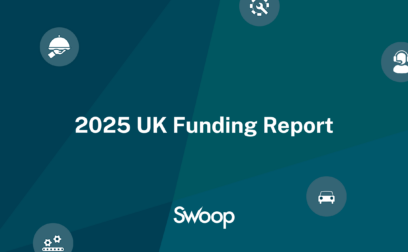What is trade finance?
Trade finance is a form of working capital finance designed to give you the cash you need to buy inventory or stock from a supplier. It is a loan that delivers payment to an exporter on behalf of the importer, before the goods have arrived. The lender will loan money to the importer so that the exporter can be paid once goods have been shipped. The function of trade finance is to act as a third-party to remove the payment risk and the supply risk, whilst providing the exporter with accelerated receivables and the importer with extended credit.
As trade finance is based on purchase orders, it’s sometimes called purchase order finance or import finance. If you’re importing or exporting to some U.K customers and others abroad, trade finance could help you.
Example
Cindy’s Chocolates has been selling chocolates in the U.K for a few months and the brand is growing in popularity. A major department store notices Cindy’s products and orders 2,000 units for the run-up to Christmas. It’s a great opportunity to get the product on the shelves in time for one of the busiest times of the year. However, Cindy has only been selling a 300-400 units per month until now, and doesn’t have enough money to pay her supplier for an order of this size. As the customer and supplier are both established businesses, Cindy is able to approach a trade finance lender.
The trade finance lender looks at Cindy’s purchase order from the department store, and carries out the standard due diligence. Once they’re satisfied they’d like to work with Cindy, they order the products from the manufacturer. With trade finance in place, Cindy’s supplier is paid sooner than normal, so the products can be shipped at an earlier date. The supplier invoices the trade finance company for the shipped goods; once the department store pays the trade finance company, Cindy receives the profits, minus their fees.
Advantages
Allows for growth
More working capital and better cash flow management will allow the business owner to keep in control of the day-to-day running costs, whilst growing and fulfilling larger orders that wouldn’t have been possible before.
Higher profit margins
SMEs can buy in bulk or volume, often at reduced costs. Trade finance strengthens the relationship between buyers and sellers. This is also an opportunity to increase your profit margins.
Reduces bankruptcy risk
External financing or revolving credit facilities can ease the pressure of ate payments from debtors, bad debts, excess stock and demanding creditors that many SMEs end up having to deal with.
Companies and providers
Usually, the mainstream banks such as HSBC and Barclays only work with businesses with revenue in the millions, so they’re not an option for smaller companies.
There are lots of lenders offering trade finance, invoice finance, or a combination, including Scottish Pacific, BACB and Aldermore.
Eligibility and criteria
Is trade finance right for your business? Ask yourself these two questions:
- Have you got a purchase order you need to fund?
- Do you want to import or export products for resale?
If you answered yes to these questions, trade finance could be the right option for growing your business. Trade financiers are really only concerned with knowing “what’s the transaction, how much will it grow your business, and who else is involved?” We would recommend trade finance for companies that have good supply chains and end-buyers, but don’t quite have the working capital to go it alone.
Interest rates
For trade finance, interests rates usually range from 1.25% to 3%. It’s often the case that the larger the order, the lower the rate you’ll be paying. The cost of your trade finance will also depend on the supplier and buyer you’re working with, as they both impact the chances of something going wrong. Having invoice finance alongside trade finance might add to the overall cost, so although it may be a good option for many business, it’s something you should be sure about before commencing with the process.
Interested in trade finance?
Do you think trade finance might be the solution for you? If you’re an entrepreneur about to embark on a business venture, we can help. Head to swoopfunding.com and we’ll show you all the options available to you, along with the best rates. Don’t let funding become a headache – let us do the heavy lifting so you can focus on running your business!
































 yet? Register here!
yet? Register here!